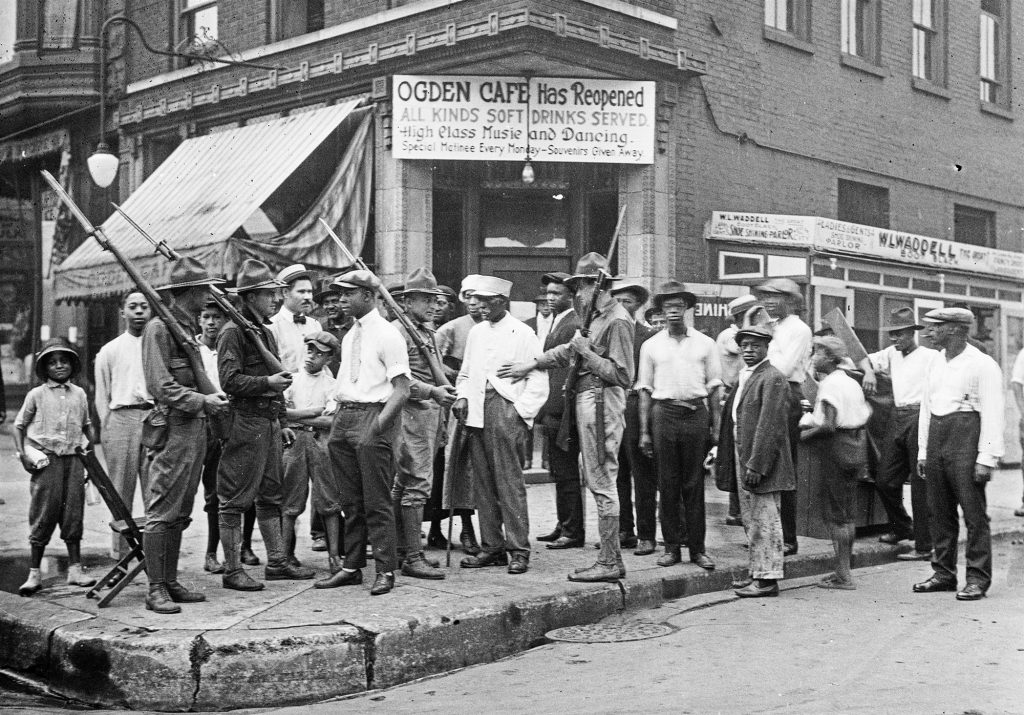
Racial violence and a pandemic: How the Red Summer of 1919 relates to 2020
The wave of violence a century ago against Black Americans echoes how today, “people feel they have little to lose, and so much at stake,” one historian said.
By Erik Ortiz
Racial strife flaring across the United States. Black Americans standing up to societal structures in unpredictable ways. People enduring months of a deadly pandemic infecting millions worldwide, shuttering businesses and heightening fears of a lengthy economic downturn.
That was 1919, during what would later be coined the “Red Summer,” when communities across America were reeling from white mobs inciting brutality against Black people and cities were still wrestling with a third wave of the so-called Spanish flu pandemic that emerged the previous year.
The story line parallels with today: violence against Black people, leading to mass demonstrations and calls to end systemic racism, converging with a months-long coronavirus pandemic. Such commonality is not lost on historians and scholars of African American history.
“These are moments of extreme precariousness, where people are suddenly uncertain about their fate, economic prospects and the social order,” said Geoff Ward, a professor of African and African American studies at Washington University in St. Louis who has mapped out historic incidents of racial violence.
“Mass mobilization may be more likely in such circumstances where people feel they have little to lose,” he said, “and so much at stake.”
But if history is any indication, the developments of barely a century ago, when civil rights groups were reinvigorated and Black journalists and activists asserted their voices, might also offer a glimpse into how 2020 — and beyond — could play out.
What happened during the Red Summer of 1919?
The general mob-led violence against Black people actually began before the summer in localized incidents.
In the book “Red Summer: The Summer of 1919 and the Awakening of Black America,” author Cameron McWhirter described what led up to a deadly riot in Jenkins County, Georgia, in April, when Black churches were burned and Black men killed.
It was just the start: “In coming months, similar horrors would afflict cities and towns across America. The violence that April Sunday was only the beginning of what would become known as the Red Summer of 1919, when riots and lynchings spread throughout the country, causing havoc and harming thousands — yet also awakening millions of blacks to fight for rights guaranteed them, but so long denied.”
James Weldon Johnson, an NAACP leader who organized peaceful protests that year, began using the term Red Summer to describe the bloodshed.
It was during the summer months when the violent assaults began spiraling in major cities like Philadelphia, Washington, New York and Chicago, places where African Americans were migrating in large numbers for opportunities that didn’t exist in the South. At the time, however, race relations only deteriorated under President Woodrow Wilson, who supported racist and segregationist policies in the federal government.
Ward said that white people were responding to the “ever-present white fear of a loss of social status and dominance” and were “resentful of this disruption of social, economic and political order.”

In addition, the influx of African Americans into northern cities continued as the Spanish flu spread in 1918 before the pandemic subsided in the summer of 1919, and whites were blaming Black migrants for the spread of illness.
Historical accounts also described how white military members, who had returned to Washington after the end of World War I, seized on sensationalist rumors of Black men assaulting white women, which was amplified in D.C.’s newspapers. An estimated 40 people were killed that July in the nation’s capital, with hundreds of federal troops deployed to stamp out the unrest.
Johnson documented what was happening: “I knew it to be true, but it was almost an impossibility for me to realize as a truth that men and women of my race were being mobbed, chased, dragged from street cars, beaten and killed within the shadow of the dome of the Capitol, at the very front door of the White House,” he wrote in the NAACP’s Crisis magazine.
In recounting those events, The Washington Post wrote that jobs were scarce at the time, and many whites felt slighted that a small number of Blacks could secure low-level government jobs.









